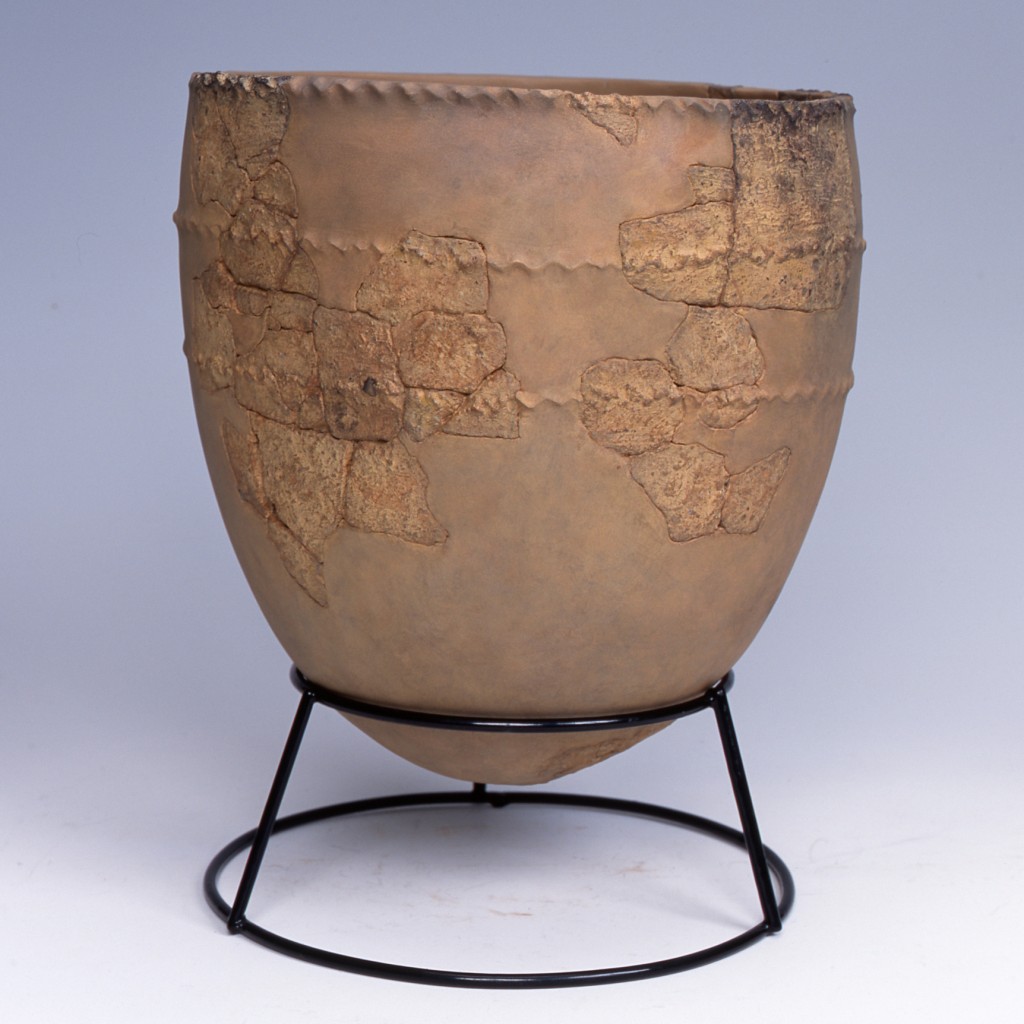An Incipient JÅmon pot from Kubodera-minami, Niigata Prefecture, Japan ca. 15,000 years old. Photo courtesy of Tokamchi City Museum
A study involving scientists at the University of Liverpool has found the earliest use of ceramic pots was for cooking fish.
In the first study to address the question of why humans made pots, scientists from the UK, the Netherlands, Sweden and Japan carried out chemical analysis of food residues in pottery up to 15,000 years old from the late glacial period.
Charred surface deposits
The research team was able to determine the use of a range of hunter-gatherer “JÅmon” ceramic vessels through chemical analysis of organic compounds extracted from charred surface deposits.
The samples are some of the earliest found in Japan which is recognised to be one of the first centres for ceramic innovation, and date to the end of the Late Pleistocene – a time when humans were adjusting to changing climates and new environments.
Until quite recently ceramic container technologies have been associated with the arrival of farming, but it is now known they were an adapted by hunter-gatherers much earlier, though the reasons for their emergence and subsequent widespread uptake are poorly understood. The first ceramic containers must have provided prehistoric hunter-gatherers with attractive new ways for processing and consuming foods but until now virtually nothing was known of how, or for what, early pots were used.
The researchers recovered diagnostic lipids from the charred surface deposits of the pottery. These lipids were then analysed for their carbon isotope composition using the isotope facility at the University’s School of Environmental Sciences, the LIFER lab. The results revealed that the lipids in the majority of the charred deposits, collected from across Japan, were derived from high trophic level aquatic foods.
Dr Anu Thompson, from the School of Environmental Sciences, said: “We undertook isotopic analyses of individual fatty acids extracted from the archaeological samples using a specialised mass spectrometric system. The carbon isotopes provided us with information on the biological and chemical origin of these fatty acids and we were able to confirm that the principle fats sorbed in the pottery were of aquatic rather than land origin.”
Dr Oliver Craig,from University of York who led the research, said: “Foragers first used pottery as a revolutionary new strategy for the processing of marine and freshwater fish but perhaps most interesting is that this fundamental adaptation emerged over a period of severe climate change.
“The reliability and high abundance of food along shorelines and river-banks may well have provided the initial impetus for an investment in producing ceramic containers, perhaps to make the most of seasonal gluts or as part of elaborate celebratory feasts and could be linked to a reduction in mobility. This initial phase of ceramic production probably paved the way for further intensification in the warmer climate of the Holocene when we see much more pottery on Japanese sites.
Revolutionary technology
“This study demonstrates that it is possible to analyse organic residues from some of the world’s earliest ceramic vessels. It opens the way for further study of hunter-gatherer pottery from later periods to clarify the development of what was a revolutionary technology.”
The study also involved the University of Bradford; Manchester Metropolitan University; the University of Aberdeen; Stockholm University; University of Groningen; Netherlands;Niigata Prefectural Museum of History; Niigata; Research Institute for Humanity and Nature; and Wakasa History and Folklore Museum, Fukui, in Japan.
The research is published in Nature and was supported by the Leverhulme Trust and Japanese Society for the Promotion of Science.

